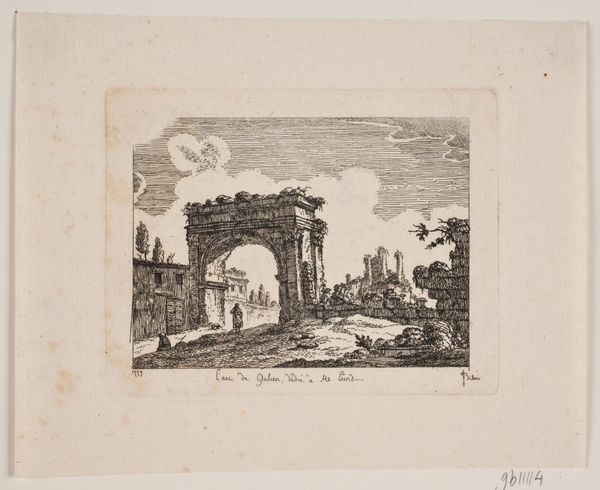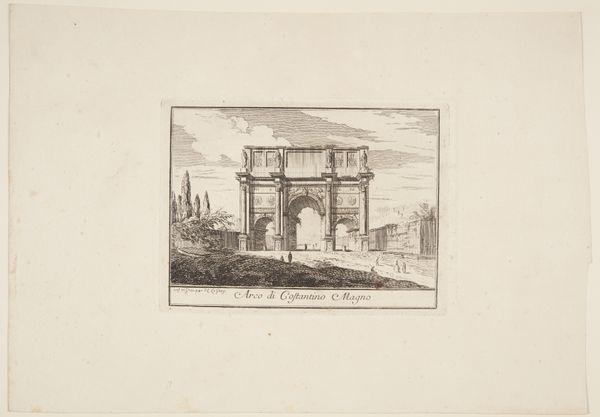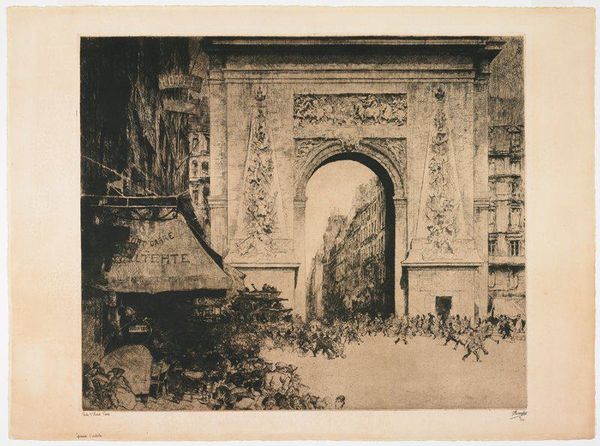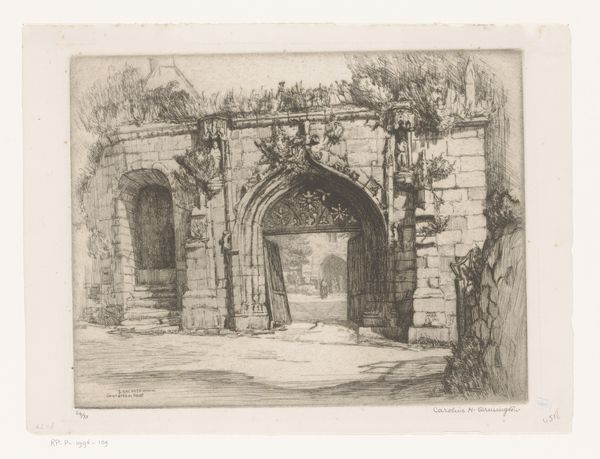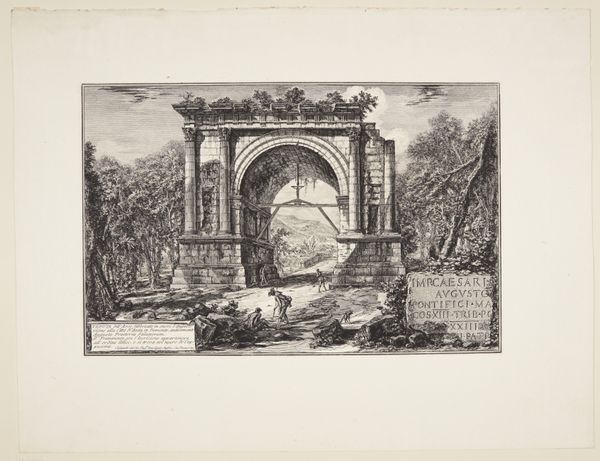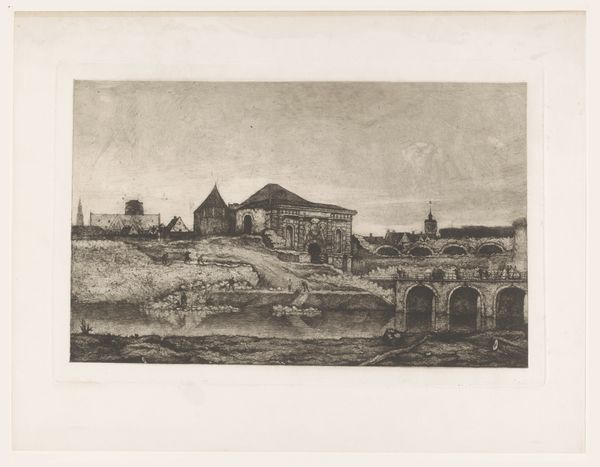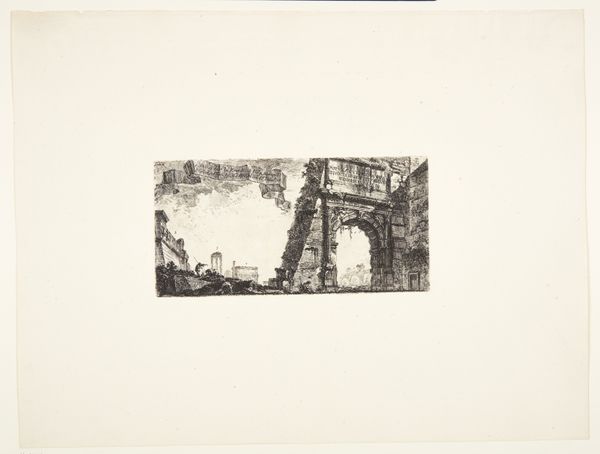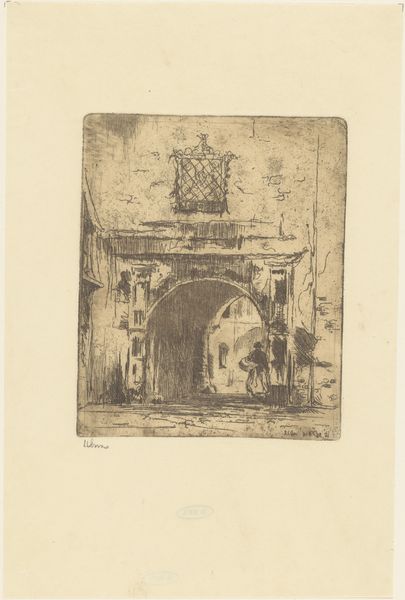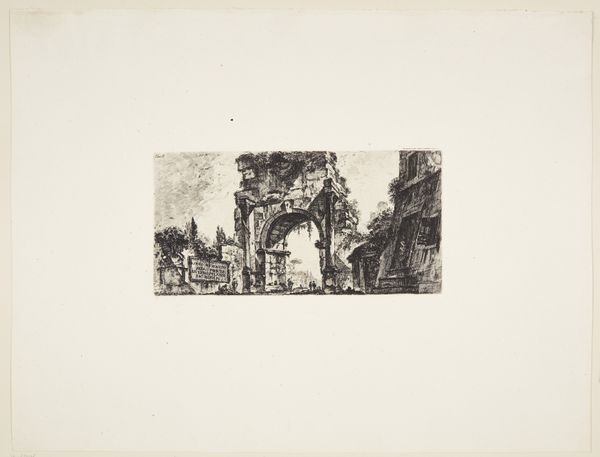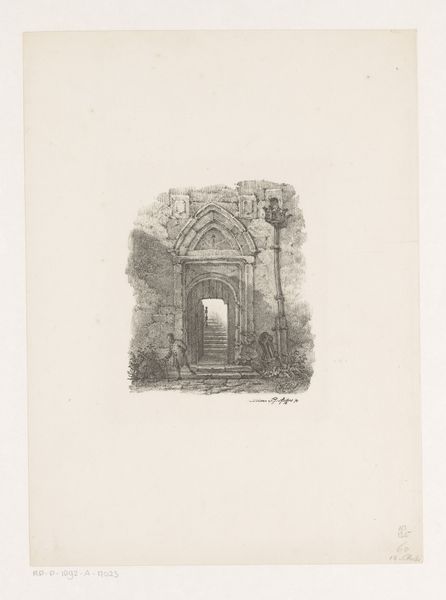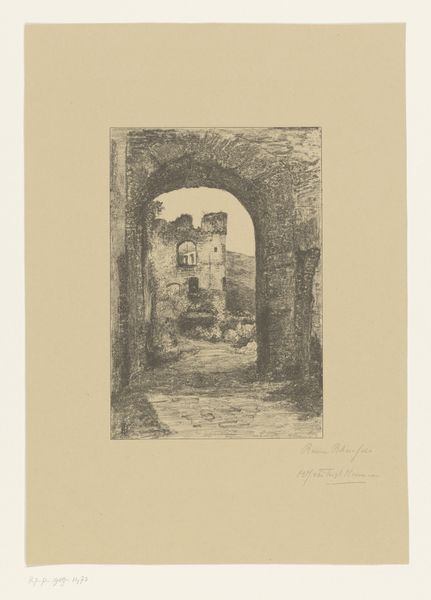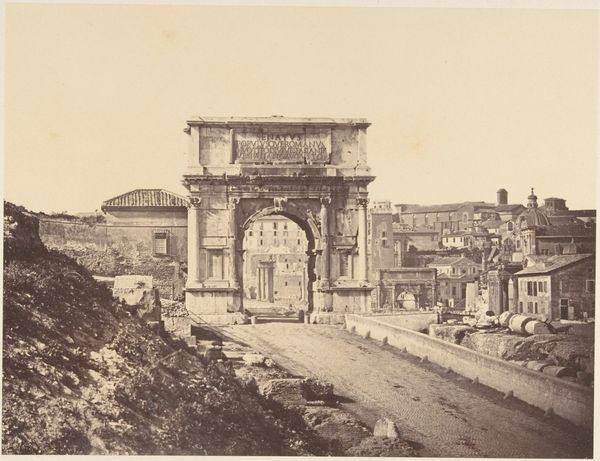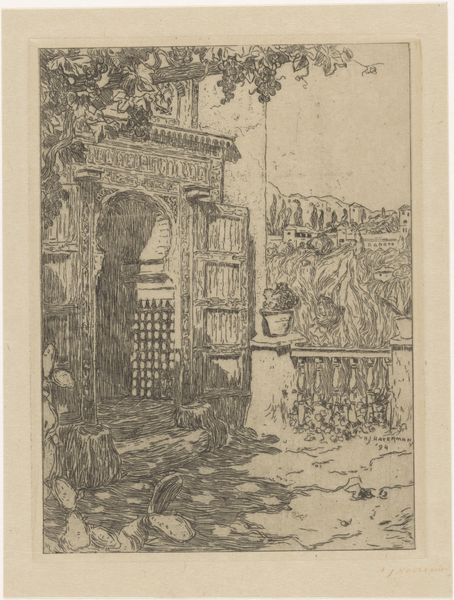
drawing, print, etching, engraving
#
drawing
# print
#
etching
#
landscape
#
classical-realism
#
etching
#
cityscape
#
engraving
#
realism
Dimensions: height 140 mm, width 184 mm, height 168 mm, width 212 mm
Copyright: Rijks Museum: Open Domain
Curator: We're looking at "L'arc de Titus Rome," an etching by Etienne Bosch, likely created before 1931. It's a cityscape showcasing the ancient Roman arch. Editor: My immediate reaction is somber. It’s monochromatic, almost ghostly. The textures created by the etching feel rough, like aged stone itself. It certainly conveys the weight of history. Curator: Exactly. Bosch seems fascinated by the monumental scale of Roman architecture and its place in the modern landscape. These arches were propaganda writ large, triumphal statements of military might and imperial authority. This one, specifically, was erected to honor Emperor Titus. Editor: And those themes of power are still relevant today. It makes you think about who gets to be memorialized, and whose stories are erased from the narrative of a city. Who commissioned it? What impact did this kind of symbolic glorification have on the lived experiences of those marginalized by Roman society? Curator: A fair point. Think about the institutional aspect. Monuments like the Arch of Titus served the political and social functions of Roman society and, for that matter, modern society. It helped consolidate imperial power by shaping public memory. Editor: It is striking how Bosch positions figures dwarfed by the arch, reminding us of how individual experiences become enmeshed in these grand narratives of power. Do we have information on the audience he expected for such prints? Did that contribute to its significance as social commentary at the time? Curator: Unfortunately, direct records of that specific intention are scarce. What’s particularly fascinating is Bosch's embrace of printmaking. Prints like this one democratize art, making it accessible to a broader public that photographs at the time could not easily offer. Editor: Interesting thought. Prints made accessible a symbol that was and is not so accessible in reality. Curator: I see this work then as inviting a more grounded interpretation of history and the complex socio-political meanings attached to this lasting monument. Editor: Absolutely. I leave this viewing pondering who will be memorialized in the urban landscape of the future and who makes those choices.
Comments
No comments
Be the first to comment and join the conversation on the ultimate creative platform.
